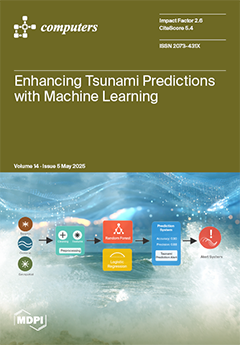Background/Objectives: Hospital readmissions within 30 days are a major challenge in general internal medicine (GIM), impacting patient outcomes and healthcare costs. This study aimed to develop and evaluate machine learning (ML) models for predicting 30-day readmissions in patients admitted under a GIM unit
[...] Read more.
Background/Objectives: Hospital readmissions within 30 days are a major challenge in general internal medicine (GIM), impacting patient outcomes and healthcare costs. This study aimed to develop and evaluate machine learning (ML) models for predicting 30-day readmissions in patients admitted under a GIM unit and to identify key predictors to guide targeted interventions.
Methods: A prospective study was conducted on 443 patients admitted to the Unit of General Internal Medicine at Sultan Qaboos University Hospital between May and September 2023. Sixty-two variables were collected, including demographics, comorbidities, laboratory markers, vital signs, and medication data. Data preprocessing included handling missing values, standardizing continuous variables, and applying one-hot encoding to categorical variables. Four ML models—logistic regression, random forest, gradient boosting, and support vector machine (SVM)—were trained and evaluated. An ensemble model combining soft voting and weighted voting was developed to enhance performance, particularly recall.
Results: The overall 30-day readmission rate was 14.2%. Among all models, logistic regression had the highest clinical relevance due to its balanced recall (70.6%) and area under the curve (AUC = 0.735). While random forest and SVM models showed higher precision, they had lower recall compared to logistic regression. The ensemble model improved recall to 70.6% through adjusted thresholds and model weighting, though precision declined. The most significant predictors of readmission included length of hospital stay, weight, age, number of medications, and abnormalities in liver enzymes.
Conclusions: ML models, particularly ensemble approaches, can effectively predict 30-day readmissions in GIM patients. Tailored interventions using key predictors may help reduce readmission rates, although model calibration is essential to optimize performance trade-offs.
Full article





